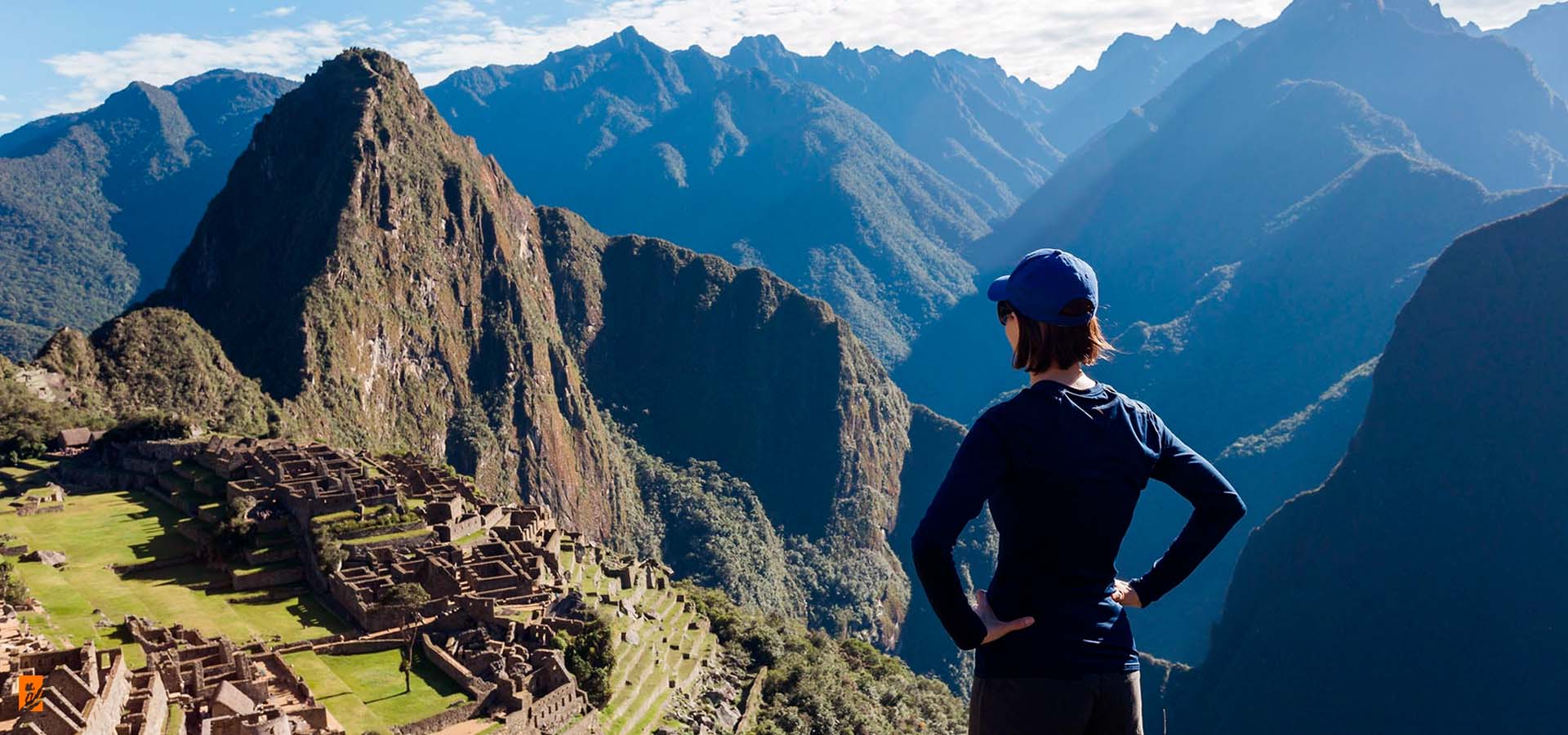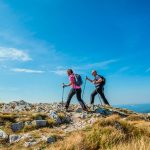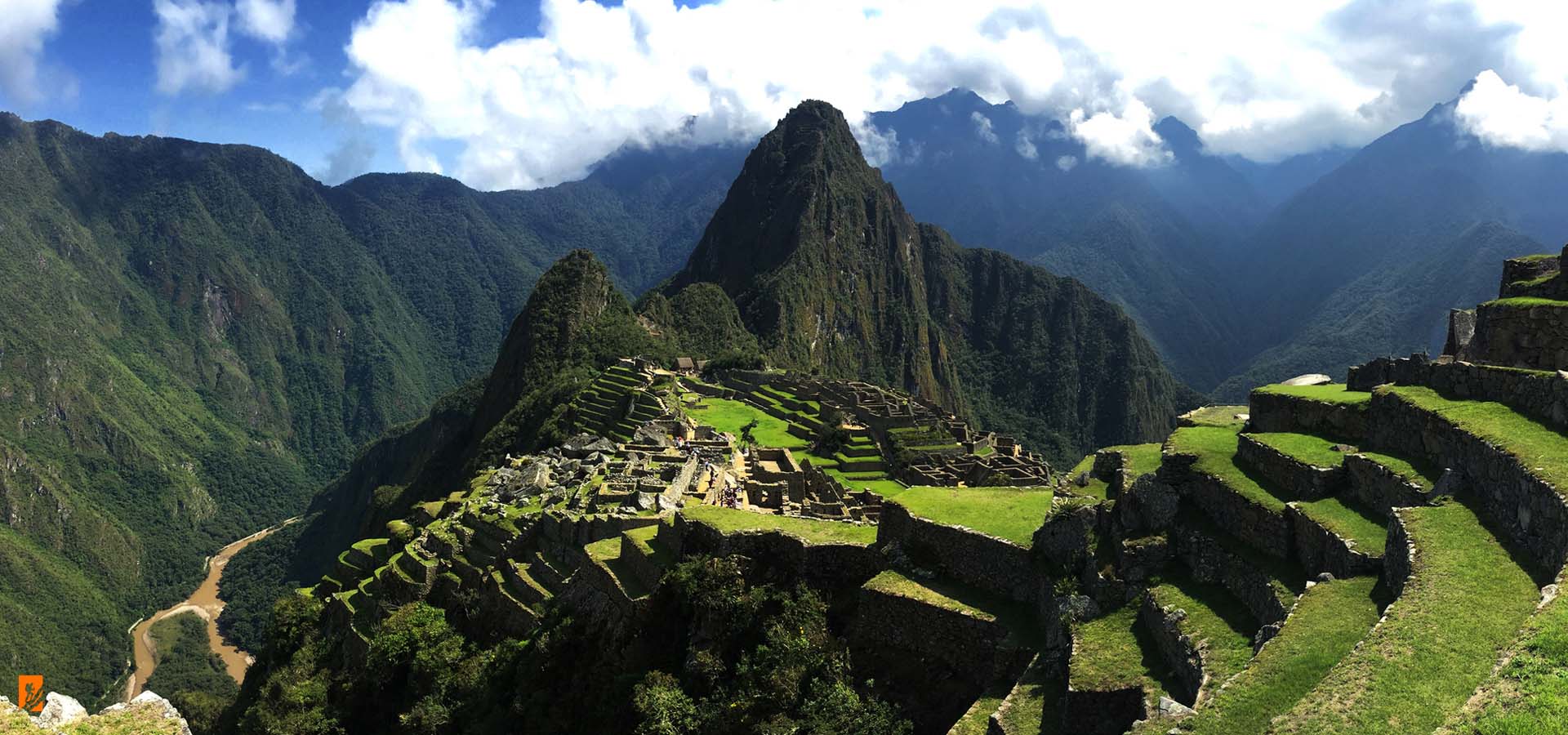Discover the Salkantay Trek to Machu Picchu with this handy guide. Everything you need to know about this epic hike with Sam Corp!
Every year, hikers from around the world flock to Peru to embark on one of the world-famous treks to Machu Picchu. While the most well-known trek is the Inca Trail, a handful of other treks are beginning to surge in popularity.
Among the Inca Trail alternative treks, the Salkantay Trek to Machu Picchu is one of the most visually stunning and physically demanding. With its varied altitude and rural pathways, the trek spans several types of terrain in some rugged areas of the Andes Mountains. But, if you’re up for the challenge, it can also be one of the most rewarding.
If you’re considering a multi-day trek to Machu Picchu, read on to learn everything you’ll need to know about the Salkantay Trek to Machu Picchu.
Everything You Need to Know About the Salkantay Trek
How Long is the Salkantay Trek Distance?
The Salkantay Trek distance ranges from 48-70 km (30-43 miles), spread out accordingly over 3-5 days. However, not all days are equal. While the first day is generally shorter, at ~8-14 kilometers (depending on whether you go up to Humantay Lake or not), the longer days can range from 24-26 km of hiking.
That said, there are different options to decrease the Salkantay Trek distance for those who do not want to hike the whole thing, including horse rentals or taking a train from Hydroelectric Station to Aguas Calientes.
What is the Salkantay Trek Elevation?
With its wide variety of terrains, the Salkantay Trek elevation ranges from 1,600 to 4,650 meters (5,250-15,255 feet). Although the elevation varies significantly, start up higher and gradually work your way downhill.
***Before the trek, we do highly recommend taking 1-2 days at a minimum to acclimatize in Cusco, as the maximum Salkantay Trek elevation is significantly higher than in the Cusco city.
What is the level of difficulty of the Salkantay Trek?
It will be depending your fitness. The Salkantay Trek difficulty is moderate to difficult, but is attainable for most people with some hiking experience.
Although it is accessible to most levels of hikers with good fitness levels, the altitude, length of trekking each day, and tough uphill/downhill stretches definitely increase the difficulty of this hike. We recommend being fully acclimatized to the altitude before embarking on the Salkantay Trail.
What is the Typical Salkantay Trek Price?
- On average, the Salkantay Trek price typically runs from $250-550, depending on the number of days of the trek, and whether you book online or in person.
- This price usually includes camping gear, accommodation, and luggage storage/transport for the duration of the tour. As you probably gathered from the wide range of pricing, the accommodations on the trails range from bare-bones to fairly luxurious. If you’d like extras like renting a sleeping bag or trekking poles, it will cost you a little bit more.
- We highly recommend to book the Salkantay Trek in advance in order to secure the entrances to Machu Picchu and Huayna Picchu mt, even train tickets, especially if you’re traveling the high season (April to September) and of course booking with a trustworthy and reputable trekking company like SAM Corporations will provide a much better experience.
What Should I Pack? A Salkantay Trek Packing List
Much like any other multi-day trek, you’ll want to pack as lightly as possible for the Salkantay Trek.
Usually, the tour operators will let you pack a small duffel with some extra clothes and toiletries. These get transported by mule from campsite to campsite. In addition, you’ll want to carry your own day pack with essentials like water, sunscreen, and clothing layers. We do recommend to take 30L hiking backpack.
Here is a list of what must be packed:
- Original passport
- Waterproof hiking boots – Columbia hiking boots are great.
- 3-4 pairs of thick hiking socks – REI has a fantastic selection of hiking socks, but if you prefer to order online, Smartwool has some great options for men and women.
- 2-3 sweat-wicking t-shirts or tank tops
- 1-2 long-sleeve shirts (including a synthetic or Merino wool baselayer if you have one)
- 1-2 pairs of long pants
- A thermal jacket
- A rain shell – North Face rain jackets are great
- A reusable water bottle
- A head lamp
- A hat or visor
- Bug spray and sunscreen (Highly recommneded)
- Toiletries
- Sleeping bag – It can be rented from SAM Corporations.
- Trekking poles – It can be rented from SAM Corporations.
Which is the Best Salkantay Trekking Company?
Although there are several options for tour operators that offer Salkantay treks, here we have some list of the top rated Salkantay trekking companies
A Sample Itinerary of the Salkantay Trek to Machu Picchu
Overall, the Salkantay Trek is a memorable, challenging, and jaw-dropping hike that any outdoor or adventure enthusiast would love. If you’re looking for an experience you’ll never forget, and landscapes like none other, the Salkantay Trek definitely won’t disappoint.
Although itineraries can vary by tour group and length of time, the Salkantay typically looks something like this:
Day 1: Cusco – Soraypampa – Humantay lake – Sorococcha.
Your Andean mountain adventure begins at 4:30am when we pick you up from your hotel and drive in our private van for 3 hours to the Soraypampa trailhead. As we travel along curvy roads in the Andes, you will have views of the villages Iscuchaca and Limatambo, the surrounding valleys and the famous snow-capped Salkantay Mountain. At the Soraypampa trailhead, we have our delicious and hearty breakfast while enjoying the spectacular views of the Humantay Mountain (5,900m/19,356ft) and Salkantay Mountain (6,217m/20,396ft) glaciers.
***We then take a 2.5 hours round-trip hike up to visit the turquoise Humantay Lake. You get to take in the beautiful, crystalline-blue waters of the Humantay Lake. Take some time to be mesmerized by the beauty of such an incredible creation of nature, then hike back down to the starting point to continue with your trek to Salkantay Pampa, where you will enjoy a hot lunch.
Next, we make our way to our first campsite at Soroccocha (4,400m / 14,517ft), situated at the foot of the towering Salkantay Mountain. At camp, we will have afternoon tea to warm up and appetizers waiting for us. Your tents will already be set up and you can settle in before dinner.
- Meals included: Breakfast, lunch, afternoon tea time and dinner
- Accommodation: Camping facilities
- Distance: 12kms / 8 miles
- Difficulty: Challenging
Day 2: Sorococha – The Pass -Huayracmachay – Chaullay – Lucmabamba
Your guide will wake you with a hot mug of coffee or tea to enjoy before you get up for breakfast. After a tasty breakfast we continue onwards and upwards for one hour, we reach Apacheta Pass (4,650m / 15,367ft). Your will feel truly inspired by the spectacular views of these three towering snow-capped mountains: Salkantay, Humantay, Huayanay.
These peaks are considered sacred by the Quechua people and your guide will tell you about how important these Apus are in traditional Andean beliefs. Below you are spectacular rivers of whitewater and small scenic lakes. Then we head down for 2 hours to Huayracmachay for our hot lunch. We descend for 3 hours toward the rural community of Chayllay, along the way you will love the refreshing lush green valleys and spectacular waterfalls.
Then we will take the local transpotation to Lucmabamba where we will camp.
- Meals included: Breakfast, lunch, afternoon tea time and dinner
- Accommodation: Camping facilities
- Distance: 18kms / 11 miles
- Difficulty: Moderate
Day 3: Lucmabamba – Llactapata – Hydroelectric – Aguas Calientes
After another hot drink enjoyed in your sleeping bag, you will be treated to the last delicious breakfast prepared by our chef. From here, we walk in the footsteps of the Inca, along the ancient and remote Inca Trail for 3 hours uphill to the Puncuyoc Pass (2,700m/8,858ft). Along the way, be amazed at the incredible views of deep valleys reaching into the distance with their fruit plantations. Arrive to Llactapata Inca Ruins; located right across the valley front of Machu Picchu.
There, we take time to enjoy the strategic location of the Citadel of Machu Picchu and its surrounding mountains Huayna Picchu, Machu Picchu and the Aobamba Canyon. From there, we descend for 2 hours to the hydroelectric plant, the primary power source for Cusco. Nearby, we have lunch before we take the train for a half hour to Aguas Calientes, where we will have dinner and wind down in our hotel.
- Meals included: Breakfast, lunch and dinner
- 3* Accommodation: Hotel Ferre´ Machu Picchu
- Distance: 15kms / 9 miles
- Time: Approximately 9 hours
- Difficulty : Moderate
Day 4: Aguas Calientes – Machu Picchu – Cusco
This is the day you’ve been waiting for! After an early breakfast at your hotel, take one of the first buses up to Machu Picchu, so that you can be there to witness the sunrise. It is a truly extraordinary site and not something you’ll want to miss! Your guide will give you a tour, which takes about two hours. You will see most of the important parts of Machu Picchu Citadel, learn about how Machu Picchu is divided into three sectors: agricultural, residential and religious.
When you have had your fill of the exceptional views of Machu Picchu, you will take the bus back down to Aguas Calientes for lunch (not included). Depending on your train departure time, you may also have time for some shopping, sightseeing or a visit to the museum or hot springs.
The Expedition train will take you back to Ollantaytambo at 2:55pm or 3:20pm, following the spectacular Urubamba River. The canyon is narrow and the river has many beautiful sections of whitewater. You can also see Wiñay Wayna from the train, if you look up high on the steep canyon wall! Back at Ollantaytambo, the driver will meet you at the exit from the train station to take you back to your hotel in Cusco in our private vehicle. You can expect to arrive at your hotel by 7:00pm.
- Meal included: Breakfast
- Difficulty: Easy
Best Time of the Year for the Salkantay Trek
There are two main seasons in the sub-tropical Peruvian Andes:
- The dry season runs from late April through to early October.
- The wet season starts mid to late October and ends in April.
But, when is the best time of the year to do Salkantay Trek?
The trek can technically be completed all year round, the peak trekking season to Machu Picchu occurs during the dry season and is busiest between May and September. So, the best time of year to do Salkantay Trek run from the shoulder of wet months March/April all the way through to the shoulder of dry months October/November.
Overall, the Salkantay Trek is a memorable, challenging, and jaw-dropping hike that any outdoor or adventure enthusiast would love. If you’re looking for an experience you’ll never forget, and landscapes like none other, the Salkantay Trek definitely won’t disappoint.






